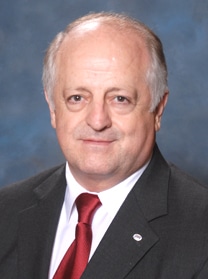WASHINGTON — Sen. Chuck Schumer (D-N.Y.) says he wants Amtrak and the Department of Homeland Security to create a “no-ride” list for intercity passenger trains, similar to the Secure Flight monitoring program in place for airlines whereby names of air travelers are cross-checked against the federal government’s terror watch list.
Separately, Virginia Railway Express has instituted a program whereby armed federal officers riding those commuter trains between their jobs in Washington, D.C., and Virginia suburbs act as volunteer train marshals during their commute.
Creation of an Amtrak no-ride list, Schumer said, would keep suspected terrorists off the U.S. rail system. Such a list would not apply to commuter trains.
Schumer called on the U.S. Department of Homeland Security to expand to Amtrak the Secure Flight monitoring program, which cross-checks air travelers with the terror watch list in an attempt to prevent anyone on the “no-fly” list from boarding commercial airliners.
Schumer said also he would push for restoring the $50 million Congress recently cut from rail and port security grants, saying that information obtained from Osama bin Laden’s hide-out — that al-Qaida had considered targeting U.S. passenger trains for terrorist acts — warrants reconsideration of rail security funds that were cut as part of the congressional budget compromise.
Schumer also called for increased funding to allow more rail-commuter and rail-passenger track inspections.
“Circumstances demand we make adjustments by increasing funding to enhance rail safety and monitoring on commuter rail transit and screening who gets on Amtrak passenger trains,” Schumer said May 8.
Following the 9/11 attacks, the September 11 Commission recommended rail-passenger names be checked against terror watch lists prior to boarding. The recommendation was not adopted for intercity passenger trains.
As for Virginia Railway Express (VRE), the Washington Examiner reports that 140 federal armed officers ride those commuter trains daily and serve as a volunteer police force for the commuter railroad, which does not have its own police force.
VRE, reports the Washington Examiner, gives those armed federal officers — employed by the FBI, Secret Service and Department of Homeland Security — zero-price rides in exchange for their remaining alert.
The Washington Examiner quoted a VRE spokesperson as saying the commuter railroad knows which trains those armed officers ride and where they sit, and that their passes contain a special marking allowing conductors to know who they are.
 By Assistant President Arty Martin
By Assistant President Arty Martin